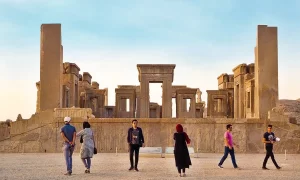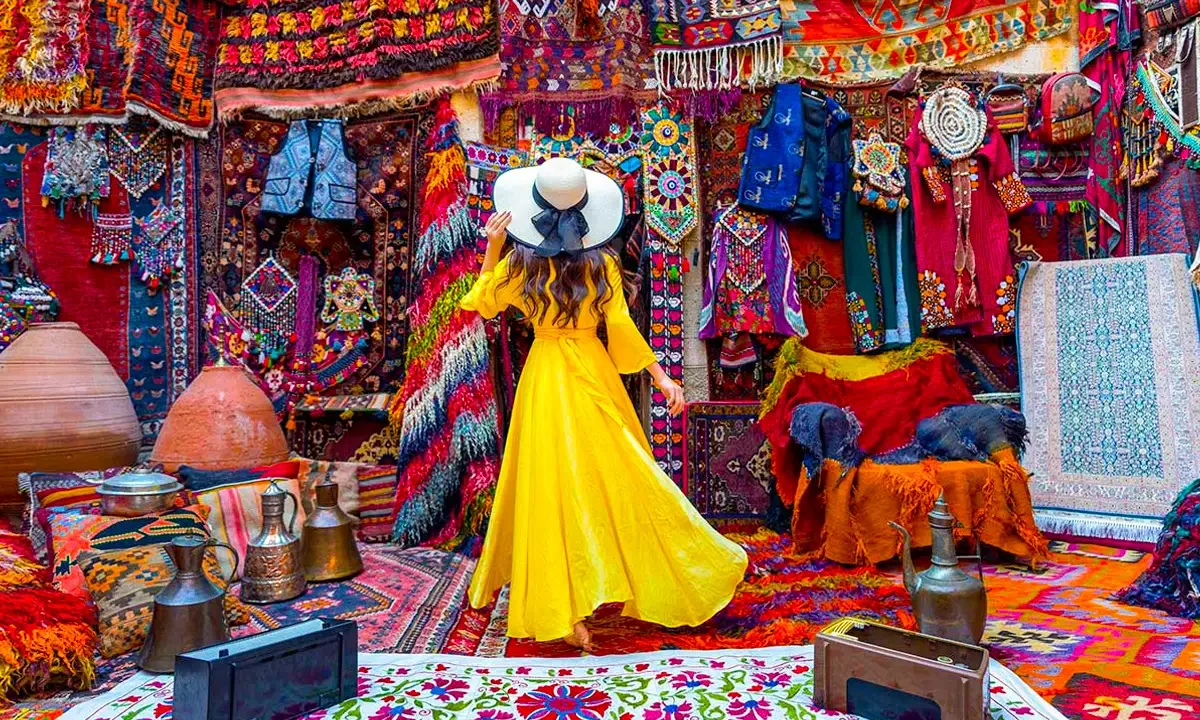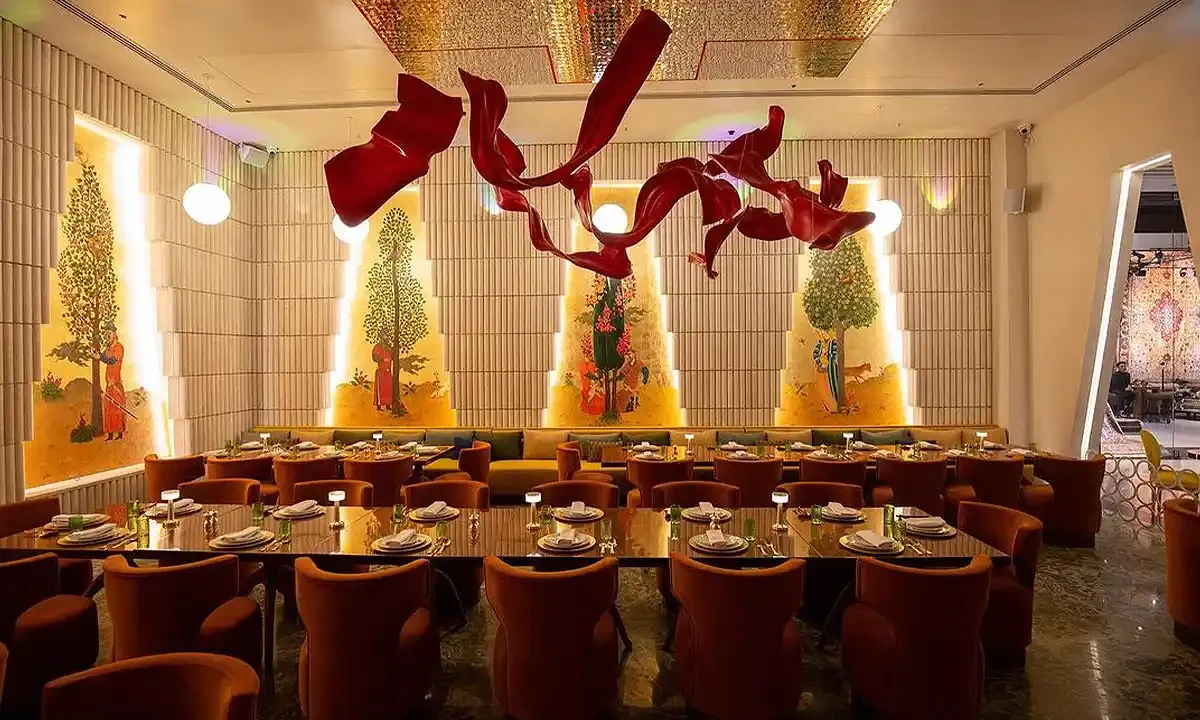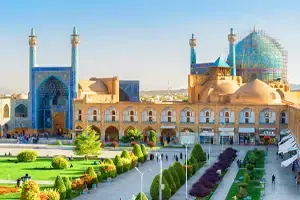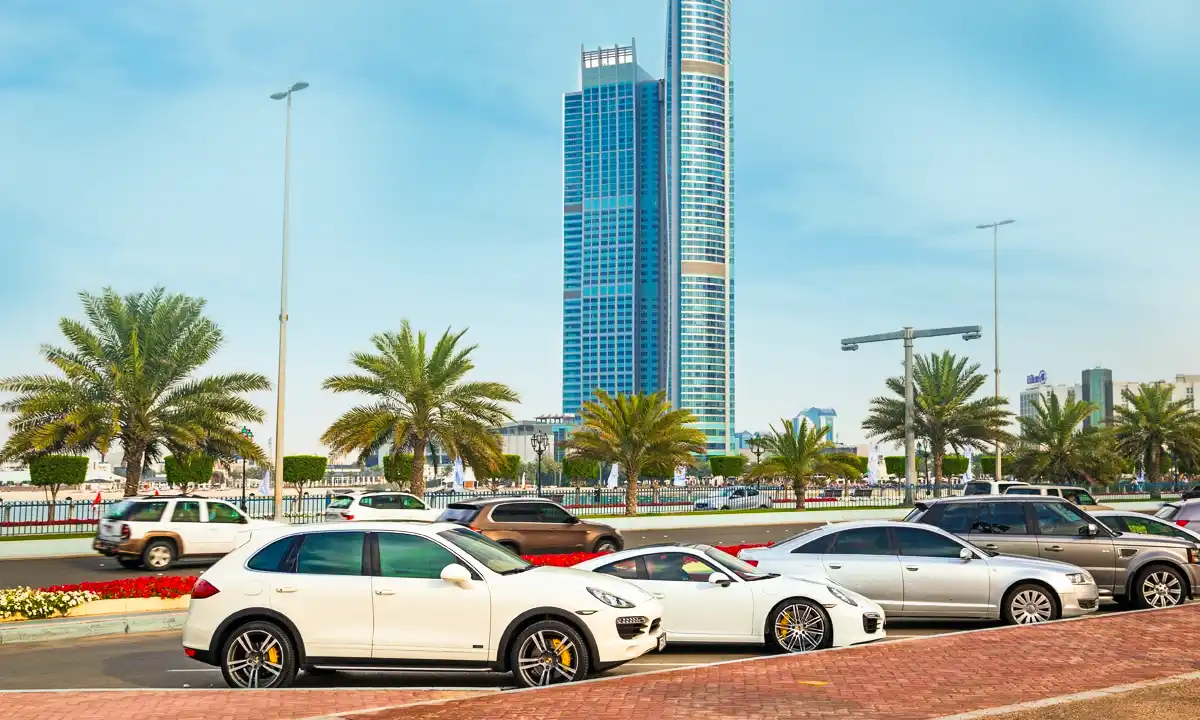Khuzestan, nestled in Iran’s southwest, is a province rich in ancient history, diverse cultures, and stunning natural landscapes. It’s a destination where history buffs, nature enthusiasts, and cultural explorers converge to discover the essence of Iran’s storied past and vibrant present. In this article, we’ll embark on a journey through Khuzestan, exploring its renowned historical sites like the Shushtar Hydraulic System and Tchogha Zanbil, and venturing into natural beauties such as the Karun River and the Shadegan Lagoon. Alongside, we’ll dive into the heart of Khuzestani culture, sampling its cuisine and crafts, and offer essential travel tips to make your visit seamless. Join us as we uncover the highlights and hidden gems of Khuzestan, ensuring you capture the full experience of this extraordinary province.
Historical and Cultural Attractions of Khuzestan
Khuzestan’s history dates back to ancient times. This province hosts three UNESCO World Sites, one of which dates back over 6000 years. Surely, among the top things to do in Khuzestan is discovering its rich history. Let’s look at some of the best Historical sites in Khuzestan.
Shushtar Historical Hydraulic System
A marvel of ancient engineering, the Shushtar Historical Hydraulic System is a UNESCO World Heritage site that showcases the ingenuity of the Sassanid era. This complex irrigation system not only highlights the advanced technological understanding of its creators but also illustrates how it was pivotal in transforming the arid landscape of the region into a fertile haven.

The Shushtar Hydraulic System consists of a complex network of dams, canals, and tunnels. The main bridge is called Gargar, which distributes water into various canals connecting to watermills. These watermills were used for grinding grains. From there, the water flows back into the river.
Tchogha Zanbil (Chogha Zanbil)
Tchogha Zanbil stands as a testament to the grandeur of the ancient Elamite civilization. Recognized as a UNESCO World Heritage site, this ziggurat is one of the best places to visit in Khuzestan, offering a unique glimpse into the religious practices and architectural advancements of a civilization that thrived around 1250 BCE.

The main part of Chogha Zanbil is its massive ziggurat, one the largest of its kind outside of Mesopotamia. It was originally about 50 meters high and made of millions of mud bricks. Unfortunately, it was destroyed by the Assyrian king Ashurbanipal around 640 BCE. Later, Tchogha Zanbil was buried until its rediscovery during the 20th century.
The Ancient City of Susa
Once among the greatest cities of ancient Mesopotamia, the ancient city of Susa holds a crucial place in history. Its ruins provide insight into the urban development, culture, and politics of a city that was a crossroads of civilizations for thousands of years, making it an indispensable site for archaeologists and historians alike.
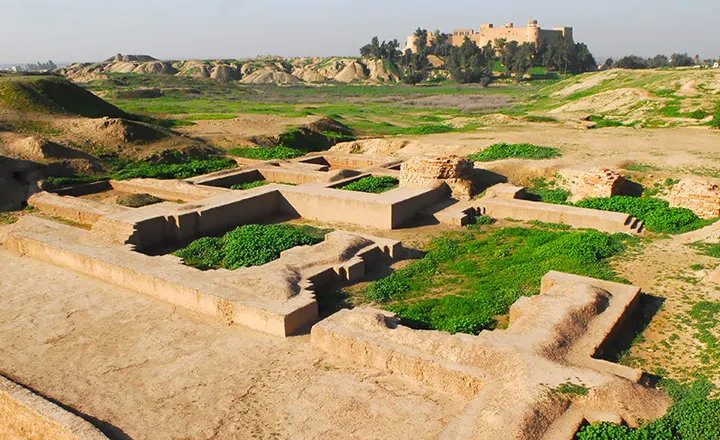
Along with history buffs, other people will be amazed to witness the ruins of a 6000-year-old city. The Ancient City of Susa is one of the oldest cities worldwide and one of the top things to do in Khuzestan.
Haft Tappeh
Located near Susa, Haft Tappeh is an archaeological site that dates back to the Elamite period, offering a window into the lives and culture of ancient people. The discovery of tombs, artifacts, and inscriptions here has been crucial in piecing together the history and social structure of the Elamites, further enriching our understanding of this ancient culture.

Haft Tappeh is like a time machine taking us back to the less understood Middle Elamite period. Although only ruins, it shows how this ancient civilization built temples, palaces, and houses. It is one of the best places to visit in Khuzestan.
Top Natural Attractions of Khuzestan
Khuzestan isn’t only famous for its historical sites. It’s also full of stunning landscapes and natural wonders. No list of things to do in Khuzestan would be complete without mentioning one or two natural attractions of this province. Besides, there has to be something special about Khuzestan landscapes that attracted civilizations from 6000 years ago until now!
Karun River and Dez River

The Karun and Dez Rivers, flowing through the heart of Khuzestan, are not just vital water sources but also hubs of recreational activities. As Iran’s longest river, the Karun, along with its significant tributary, the Dez, offers excellent opportunities for river rafting and fishing. The rivers are flanked by stunning landscapes that provide picturesque backdrops for visitors seeking the tranquility of nature.
Lali Town
Near the Lali town is a dramatic landscape of unique geological formations. This area’s rugged terrain and striking features make it a paradise for hikers and photography enthusiasts alike. The badlands offer a stark yet beautiful contrast to the lush river valleys of Khuzestan, showcasing the province’s diverse natural beauty.
Shadegan Lagoon

Recognized as a Ramsar site for its ecological importance, Shadegan Lagoon is a haven for biodiversity, attracting bird watchers and nature lovers from around the world. The lagoon’s rich ecosystems support a variety of bird species, making it an ideal spot for bird watching. The serene waters and marshlands of Shadegan also offer visitors a peaceful retreat into nature.
Cultural Experiences of Khuzestan
Along with rich history and awe-inspiring landscapes, Khuzestan has a diverse culture. This region hosts many ethnicities, such as Persians, Arabs, Lurs, Qashqais, and Bakhtiaris. These people with distinctive backgrounds add to the variety of Khuzestan’s cultural scene. Participating in cultural activities is among the top things to do in Khuzestan.
Local Markets and Cuisine in Khuzestan
Khuzestan’s local markets are a gateway to the province’s culinary treasures, offering a variety of traditional dishes that reflect its rich cultural heritage. Visitors can savor flavors unique to the region, such as Masgouf, a grilled fish delicacy, and Khoresht-e Kardeh, among other specialties. These markets not only serve as places to enjoy local cuisine but also provide a vibrant atmosphere to experience the daily life of Khuzestani people.
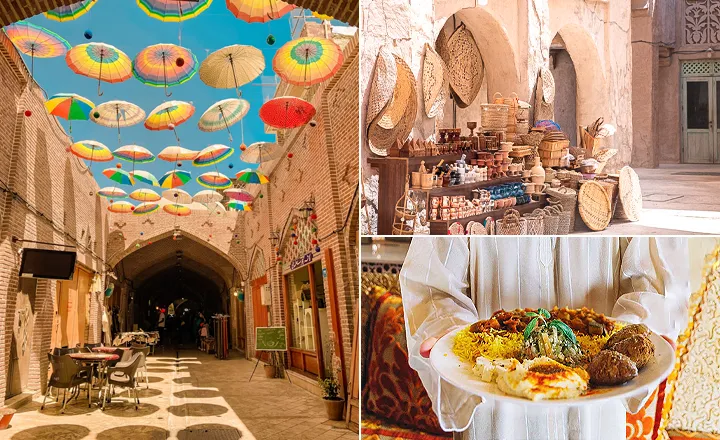
Khuzestan's Traditional Music and Dance
The cultural tapestry of Khuzestan is vividly expressed through its traditional music and dance, which hold a special place in the hearts of its people. The region’s music, characterized by its rhythmic beats and soulful melodies, is often accompanied by energetic dances that tell stories of the land’s history and heritage. Experiencing these performances offers a deep insight into the local culture and traditions.
Craftsmanship and Souvenirs in Khuzestan
Khuzestan is renowned for its skilled artisans who produce a wide range of crafts, from woven carpets and textiles to traditional jewelry and pottery. These items not only serve as beautiful souvenirs but also embody the artistic spirit and cultural identity of the region. Visitors can find these authentic crafts in local markets and specialty shops, taking home a piece of Khuzestan’s rich cultural legacy.
Modern Attractions of Khuzestan
Khuzestan has embraced modernity without letting go of its rich cultural roots, offering visitors a mix of contemporary attractions alongside its historical and natural sites. The province boasts a variety of modern developments, parks, and recreational facilities that cater to families, adventure seekers, and those looking to relax. Urban parks and green spaces provide serene retreats in the heart of its bustling cities, while state-of-the-art sports facilities and water parks offer entertainment and activity options for all ages.
Here’s a list of the best parks and other attractions to visit in Khuzestan:
- Karun River Waterfront (Ahvaz)
- Kianpars District (Ahvaz)
- Mollasani Crocodile Park (Ahvaz)
- Water Museum of Khuzestan (Shushtar)
- Laleh Park (Dezful)
- Shadegan Wetland (Shadegan)
- Ali Ibn Mahziar Ahvazi Shrine (Ahvaz)
- Peace Museum (Khorramshahr)
- Dez Dam and Lake (Dezful)
- Ahvaz Zoo
Additionally, Khuzestan is a vibrant host to numerous festivals and events throughout the year, drawing both locals and tourists. These range from cultural celebrations that showcase traditional music, dance, and culinary arts to modern art exhibitions and sports tournaments. Attending these events gives visitors a glimpse into the contemporary lifestyle of Khuzestan’s people and the opportunity to partake in the province’s dynamic community life. Some of the most popular events that are among the top things to do in Khuzestan include:
- Mehregan Festival
- Sword Dance Performances
- Mandaean New Year (Parwanaya)
- Local Music and Dance Festivals
- Cultural Exhibitions
Travel Tips When Visiting the Best Places in Khuzestan
Before planning for the top attractions in Khuzestan, there are a couple of travel tips you need to know. Follow this simple guideline to have a better and more convenient trip to Khuzestan.
The Best Time to Visit Khuzestan
To fully enjoy Khuzestan’s attractions without the extreme heat, the best times to visit are from October to April. These months offer milder weather, making it comfortable to explore both the ancient sites and natural landscapes. Additionally, this period coincides with several local festivals and events, providing a deeper cultural experience.
Accommodations in Khuzestan
Khuzestan offers a range of accommodations to suit every budget and preference, from luxury hotels in major cities like Ahvaz to traditional guesthouses near historical sites. For those seeking an authentic experience, guesthouses or eco-lodges in rural areas allow for immersion in the local lifestyle and easy access to nature.
Here, we have gathered a table of the best hotels in Khuzestan. We tried to add various accommodation types with different price ranges to suit every preference.
| Hotel’s Name | Accommodation Type | Price Range |
|---|---|---|
| Pars Hotel Ahvaz | 5-star hotel | High |
| Naderi Hotel | 3-star hotel | Mid-range |
| Hotel Iran | 3-star hotel | Budget |
| Afzal Traditional Residency | Boutique hotel | Mid-range |
| Tabib Traditional Hotel | Boutique hotel | Budget |
| Alima | Eco-lodge | Mid-range |
| Sard Castle | Eco-lodge | Mid-range |
| Mazif-e Diravi | Eco-lodge | Budget |
| Abu Ali | Eco-lodge | Budget |
Getting Around Khuzestan
Public transportation, including buses and taxis, is available in urban areas, offering an affordable way to navigate cities. Besides, the other practical option is to use online taxi apps. The most popular online taxi apps in Iran are Snapp and Tapsi.
For more flexibility and the ability to explore remote attractions at your own pace, consider renting a car in Iran. It’s advisable to have a local map or GPS device for easier navigation, especially when venturing into less urbanized regions of Khuzestan.
Last Word
Khuzestan is a land of unparalleled diversity, offering everything from ancient historical sites and lush natural landscapes to rich cultural experiences and modern attractions. With its welcoming climate during the cooler months and a variety of accommodations, it caters to travelers of all tastes. Whether you’re drawn to the majesty of its UNESCO World Heritage Sites, the tranquility of its rivers and lagoons, or the vibrancy of its cultural festivals, Khuzestan promises a memorable adventure. We encourage you to venture beyond the well-trodden paths and discover both the renowned wonders and hidden gems of this remarkable province.
What is Khuzestan known for?
Khuzestan is most famous for its oil resources, historical sites, and pleasant landscapes. Besides, this southwestern province in Iran hosts various cultures and ethnicities, such as Persians, Arabs, Lurs, and Qashqai.
What is the geography of Khuzestan?
Khuzestan is located in the southwestern part of Iran and borders Iraq from the west and the Persian Gulf from the south. North of Khuzestan is the Zagros forested mountains.
What is the largest city in Khuzestan?
The largest city in Khuzestan is Ahvaz. Located in the center of Khzestan, Ahvaz is the capital of this province and has a population of more than 1.5 million people.
How much of Khuzestan is Arab?
About one-third of the region’s population are Arabs. Khuzestan has the most Arabs among Iran’s provinces.

